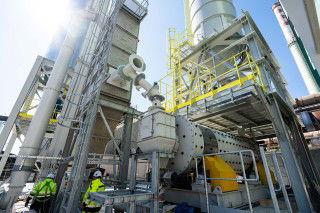Chemists at the University of Michigan (U-M) have published research detailing a method to capture CO2 from air and turn it into metal oxalates that can then be used in cement production.
“This research shows how we can take carbon dioxide, which everyone knows is a waste product that is of little-to-zero value, and upcycle it into something that’s valuable,” said Charles McCrory, U-M associate professor of chemistry and macromolecular science and engineering, who has led the work.
“We’re not just taking carbon dioxide and burying it; we’re taking it from different point sources and repurposing it for something useful.”
Metal oxalates, which are simple salts, can be used in the production of alternative cements that are less energy-consumptive than traditional Portland cement. Although it was previously known that lead could be used as a catalyst to convert CO2 into metal oxalates, this is environmentally hazardous.
Reducing lead
Prof McCrory, who previously participated in the Center for Closing the Carbon Cycle (4C), an Energy Frontier Research Center funded by the US Department of Energy’s Office of Science, utilised a technique developed by 4C to use polymers to control the environment immediately surrounding the lead catalysts, reducing the amount of lead needed in this process down to parts per billion.
To produce the oxalate from CO2, the researchers use a set of electrodes. At one electrode, CO2 is converted to oxalate (an ion dissolved in the solution). The other electrode is a metal electrode that’s being oxidised and releasing metal ions that bind with the oxalate ion and precipitate it out of solution as a metal oxalate solid, according to an article published by U-M.
“Metal oxalates represent an underexplored frontier—serving as alternative cementitious materials, synthesis precursors and even carbon dioxide storage solutions,” says Prof McCrory, adding that once the CO2 is converted into the metal oxalate solid, it can’t normally be re-released into the atmosphere.
The researchers are now exploring how to scale up the process to produce more solid product.
"We are a ways away, but I think it’s a scalable process,” Prof McCrory said.
